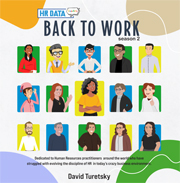
 |
The employees at Played Much are working hard on an exciting new product that is getting some buzz. However, they are having issues with server load and feel stuck. At the same time, a respected competitor approaches them about a possible acquisition. The HR department works with various other groups to try to get employee demographics updated while also realizing the need for a pay study and more transparency. The company realizes that it needs a new skill set and considers letting some employees go to make room to acquire new talent with the necessary knowledge. The idea is floated and then accepted that reskilling current employees not only maintains good working relationships but can also save money. During a discussion about the company’s needs and the possible acquisition, a new hire points out that the competing company has a platform already built that would solve their issues. Soon, the idea is floated up the chain and the possible acquisition turns into a merger deal.
Turetsky’s book is a graphic novel told in over thirty-five four-panel “episodes” that progress the story. Initially, it brings the classic Dilbert series to mind due to the office environment and its tackling of HR issues. However, the book is much more a cursory glance at real topics concerning the business world, like pay equity and employee engagement. In its brief story, it attempts to show the audience not only the range of diverse and important matters that fill the days of an HR employee but also ways in which positive outcomes can be achieved by being mindful of key components that make successful companies and HR departments. In some ways, it is a modernized version of the old training videos many employees used to be required to view in their chosen field. There are many books written about how to run an engaging and equitable work environment, and a large portion of those are thick volumes which can be somewhat obtuse. This book stands in sharp contrast to those.
Turetsky’s narrative is easy to follow and comprehend. The illustrations and production value of the whole are professional, setting it apart from many books found today. This book should be well-received by human resources professionals and other business executives familiar with the importance of their work. The narrative might have been more compelling if there had been a naysayer employee who was always shooting down whatever idea was proffered, but that might lie outside the intended scope of this work. It wouldn’t be a surprise to see this book passed around in an office and have it be the catalyst to start conversations about important topics. In addition, it could find a place in libraries and the offices of guidance counselors as it gives a concise and easy to comprehend look into the human resources profession. Within its target audience, this book should be well-received and could easily be read during a little office downtime to give the employees a smile as they recognize themselves, their coworkers, and their daily issues within its pages.